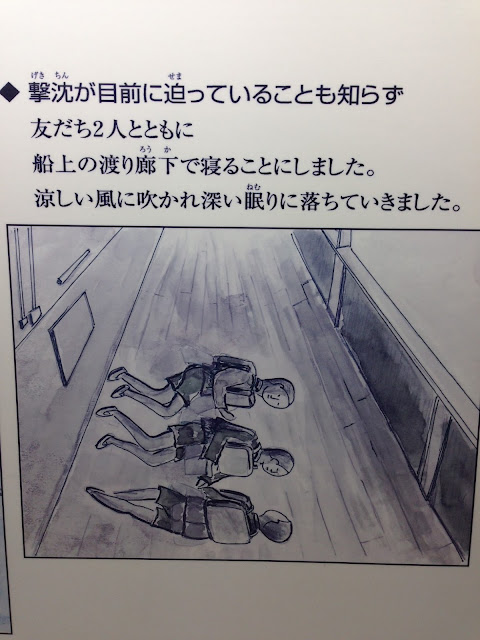In fact, I have visited the Tsushima-maru Memorial Museum. It was only one day after the Emperor and Empress visited there. While I was looking around, tears fill my eyes, and I remember not only sadness but also swelling anger and indignation.
I will describe as follows about what kind of ship was Tsushima-maru and what happened. For details, please see their website.
In 1944 as the war drew gradually closer, the old, the young, women and children were ordered to evacuate outside the prefecture. A large group of schoolchildren boarded the Tsushima-maru for evacuation, which left Naha Port on August 21.
However, the ocean had already turned into a battleground. On the night of the next day, the 22nd, the Tsushima-maru was hit and sunk by a torpedo from the American submarine Bowfin. Of the ship’s 1,788 passengers including crew and soldiers, about 80% disappeared to the bottom of the sea. (as excerpted from the museum’s website)
But the tragedy was not over. Surprisingly, the Japanese government ordered
the survivors to keep silent on the Tsushima-maru was sunk.
What was waiting for them were threat and discrimination.
And many people kept their mouth shut.
Didn’t the U.S.military know that women and children were on the Tsushima-maru? Didn’t the Japanese government have any other way? Some suspicions still linger. Anyway, there is no doubt that the children didn’t want to live away from their parents but boarded without knowing the danger of the ship. Then, eventually, they were thrown into the sea that a typhoon was approaching.
If you have an opportunity to visit Okinawa, you should visit the museum. It is near from Kokusai Street so it is easily accessible. Please see what happened with your own eyes and feel yourself about that. (H.S)
 |
| Near the entrance of the museum |
 |
| Exotic banyan trees and ixora flowers near the museum |











































